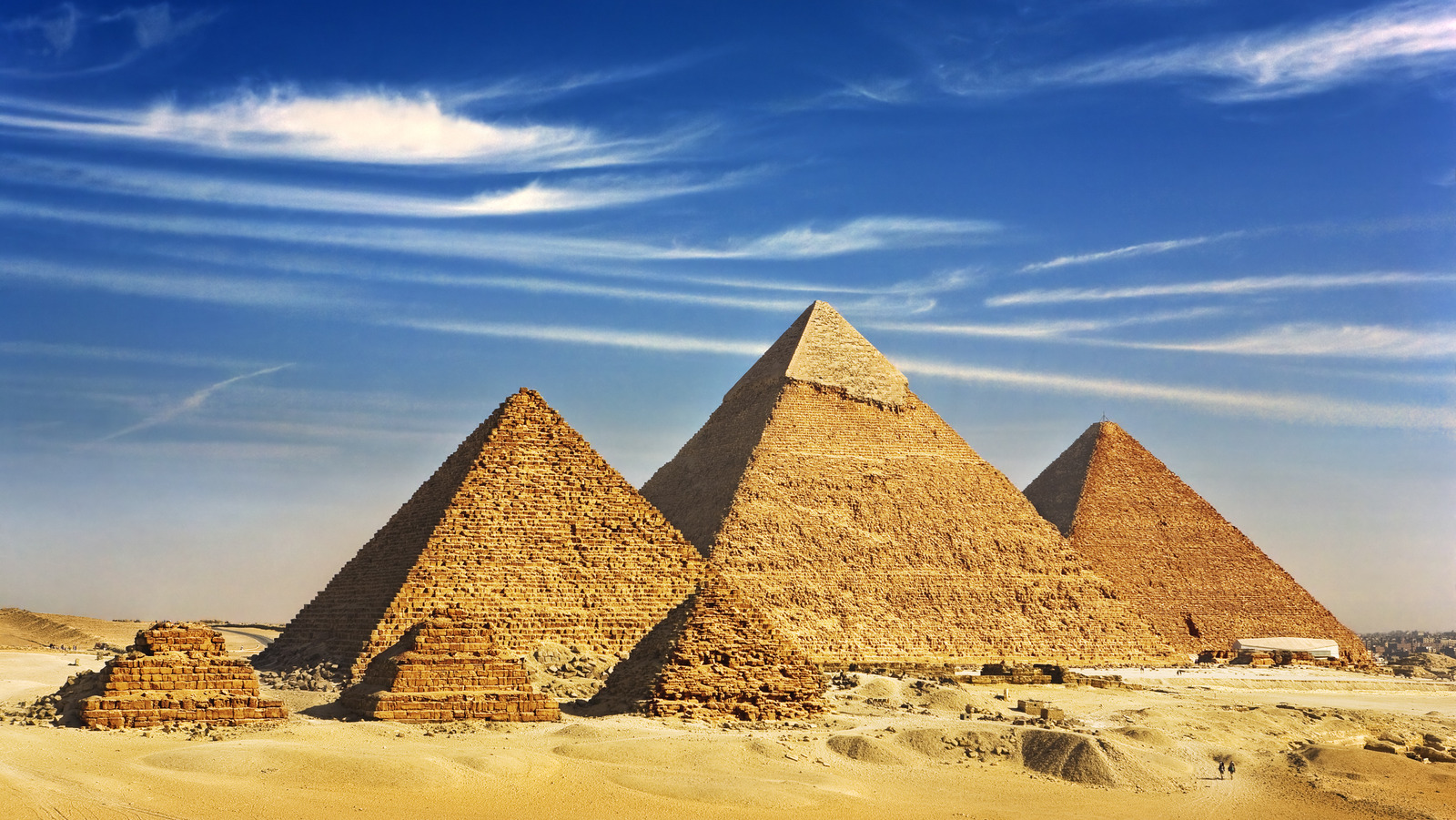
Yes, You Can Explore Inside The Pyramids Of Giza (And Here’s What You’ll See) – Explore
You don’t want to miss the chance to visit the Pyramids of Giza. The ancient structures are one of the Seven Wonders of the World and are well worth the trip. Located on the Giza Plateau, just outside of Cairo, Egypt, the pyramids offer a spectacle from the outside and a chance to explore their interiors. You can book guided tours of the area so you don’t miss the opportunity to see the Sphinx or the incredible views from Panoramic Point. You should definitely include a camel ride as part of the experience.
The incredible tombs were built somewhere between 2550 to 2490 B.C. and have withstood nearly 5,000 years of natural elements, tourists, and archeological fascination, not to mention centuries of grave robbers. Their construction is still a mystery, and estimates of how long it took to build the structures are guesses at best. Their mystery is part of the appeal of visiting the Pyramids of Giza, and your chance to explore not just the outside structures but the inside offers a full immersion into these structural wonders.
How much it costs to get inside the Pyramids of Giza
 YouTube
YouTube
There are three main pyramids that make up the great Pyramids of Giza, though in the area, there are other, smaller pyramids as well as the Great Sphinx of Giza. So when you go, there’s a lot to see. The largest and most famous of the three is the Pyramid of Khufu, followed by the second biggest, the Pyramid of Khafre. The smallest of the three is the Pyramid of Menkaure.
Since over 14 million tourists visit the Pyramids of Giza yearly, it’s good to note when to call. October to March, Egypt’s winter, is the most popular time since it’s cooler, but this means that the crowds are larger. If you can stand the heat, April to September is less crowded, but it’s best to arrive at 8 a.m. to beat rising afternoon temperatures.
Visiting Khufu commands about $16, while the other two pyramids cost about $4 each. Many tourists have noted that there’s usually only the option of seeing two pyramids in a visit. Khufu is almost always open, and one of the smaller two is as well, while the other is closed for restoration on alternating schedules.
The tombs are empty because of grave robbers
 YouTube
YouTube
Don’t expect a lot from the interiors of the Pyramids of Giza. Ancient Egyptians didn’t start decorating with hieroglyphics until several centuries after these pyramids were constructed, so the interior walls are bare. Any ornate objects or treasures were plundered centuries ago, so the interior chambers are plain. Tourists have noted that the interior chamber of Khufu is empty except for a large, plain sarcophagus. This is accessible after a moderately difficult walk through narrow passageways, many of which are not tall enough to stand full height.
Inside Khafre’s Pyramid, tourists initially descend into a lower chamber before making their way to the upper enclosure, where there’s another sarcophagus. The only marking on the walls is a line of writing from Giovanni Belzoni, an Italian explorer, who wrote “Scoperta da (Discovered by) G. Belzoni. 2. Mar. 1818,” on the wall. He claimed he had discovered the tomb, but according to Nile Magazine, robbers had located it much earlier and emptied it of its valuable contents.
While the burial chambers still hold sarcophagi, there are no mummies in the Pyramids of Giza — the bodies of the kings have never been found. Despite this, the interiors of the pyramids are well worth exploring, but virtually every travel site mentioned that these tours might be more challenging if you struggle with claustrophobia.































![iFi's GO Bar Kensei Dongle DAC Supports K2HD Technology With Some Samurai Swagger [Updated] iFi's GO Bar Kensei Dongle DAC Supports K2HD Technology With Some Samurai Swagger [Updated]](https://i0.wp.com/cdn.ecoustics.com/db0/wblob/17BA35E873D594/33FF/45A11/QTXOLJR4xDKSNMMk2WlTgjaIlvSgcYpeU1xJzUwIoYs/ifi-go-bar-kensei.jpg?w=768&ssl=1)

























